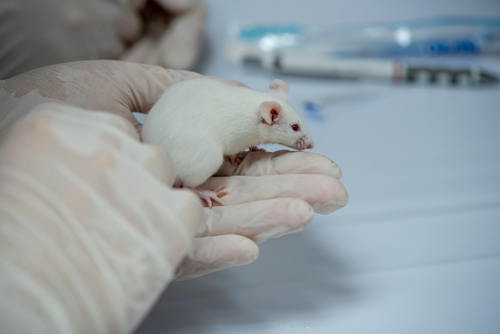Investigational Gene Therapy AVXS-401 Shows Promise in Animal Models of FA

AVXS-401, an experimental gene therapy for Friedreich’s ataxia (FA), is safe, well-tolerated, and leads to clinically meaningful improvements in mice and primate models of the disease, early studies have found.
According to researchers, these promising findings suggest that AVXS-401 is safe for human use and support beginning clinical studies.
Findings were announced in an online presentation, “Efficacy and Safety of CSF- Delivered AVXS-401 in Mice and Non-Human Primates for the Treatment of Friedreich’s Ataxia,” at the virtual 2020 American Society of Gene & Cell Therapy (ASGCT) Annual Meeting.
FA is caused by an expanded repetition of three nucleotides — the building blocks of DNA — specifically, one guanine (G) and two adenines (A), in the frataxin (FXN) gene.
Such change leads to a significant decrease in the levels of frataxin, a protein involved in iron metabolism and found in mitochondria (the cells’ energy producers). In turn, lack of frataxin leads to the buildup of iron and impairments in energy production that mainly affect high energy-demanding cells, such as those found in the heart and brain.
Previous studies have shown that FA-like symptoms in two mouse models of the disease could be alleviated by forcing cells in the central nervous system (CNS, composed of brain and spinal cord) and heart to produce frataxin.
This was achieved by providing cells with a functional version of the FXN gene delivered by an injection into the animals’ brains (intracranial), abdominal cavities (intraperitoneal), or bloodstreams (intravenous).
AVXS-401 — an investigational gene therapy being developed by AveXis, now part of Novartis — is based on the same principle. The therapy uses a harmless adeno-associated virus (AAV) vector, called AAV9, to deliver a functional copy of the FXN gene to restore the production of frataxin in the tissues affected most by FA.
Early toxicity studies performed in healthy mice have shown that AVXS-401 is safe and well-tolerated.
Subsequent efficacy studies then showed that a single intracerebroventricular (ICV) injection of low dose AVXS-401 improved behavior and reversed gliosis in a mouse model of FA that lacked frataxin in the CNS.
An ICV injection is administered directly to the brain’s ventricles (fluid-filled brain cavities). Gliosis refers to excessive proliferation of glial cells, which support and protect neurons, in response to injury.
In another mouse model that lacked frataxin in the heart, ICV delivery of AVXS-401 restored cardiac function, prolonged median survival by more than 300%, and prevented the onset of cardiomyopathy (heart disease).
When scaled up to therapeutic doses and given to primates, AVXS-401 was safe and well-tolerated, and led to durable expression of the artificial frataxin in the CNS and heart that was still evident six months after treatment.
Also, delivery into the spinal canal showed correlation between AVXS-401 doses in primates and mice in target tissues.
“Together these preclinical data show that AVXS-401 is suitable for first-in-human studies,” the investigators wrote.






